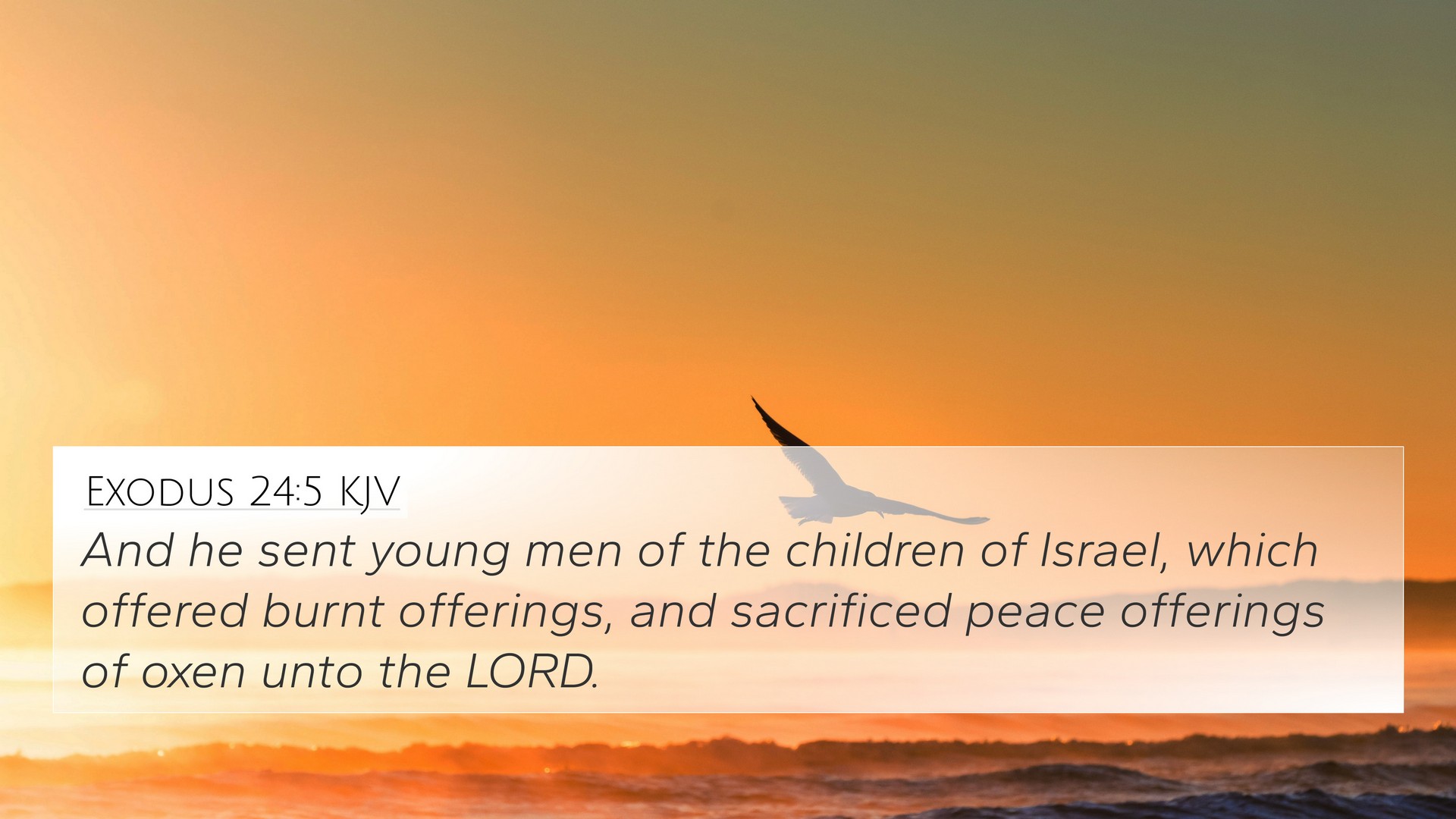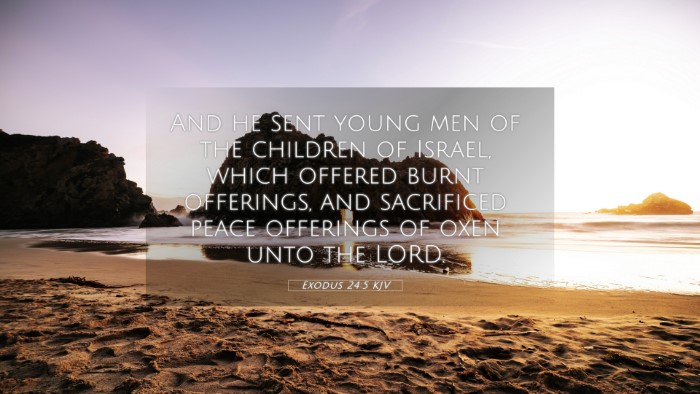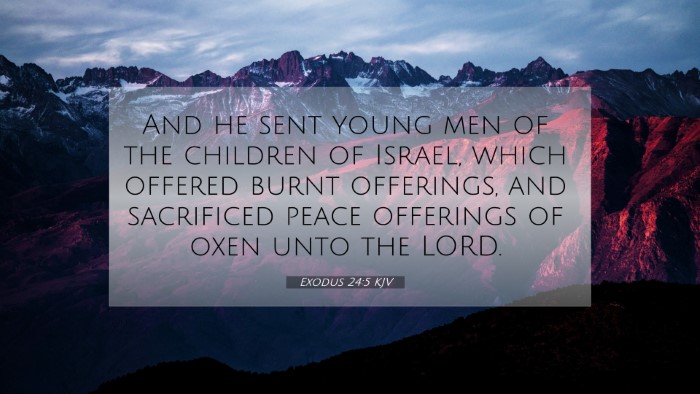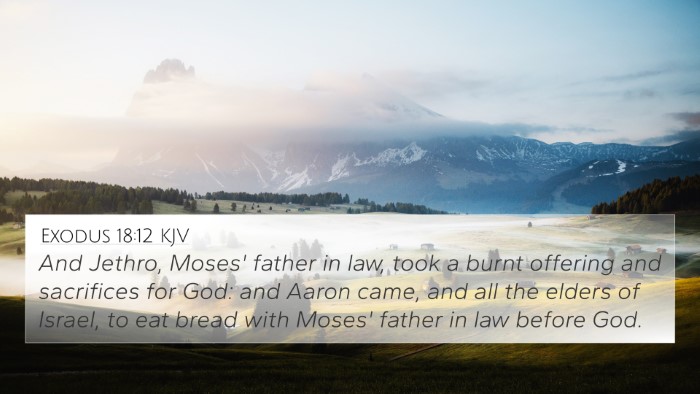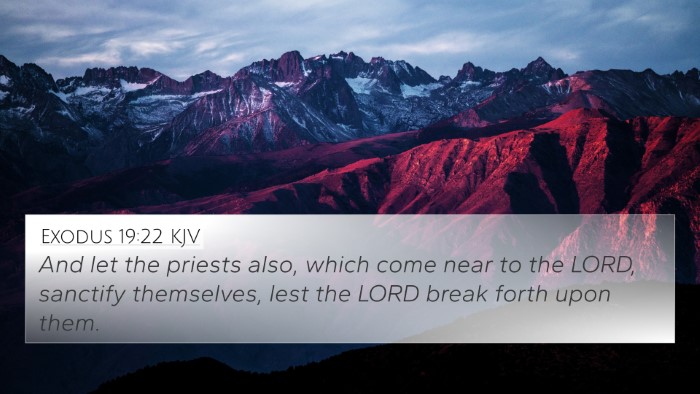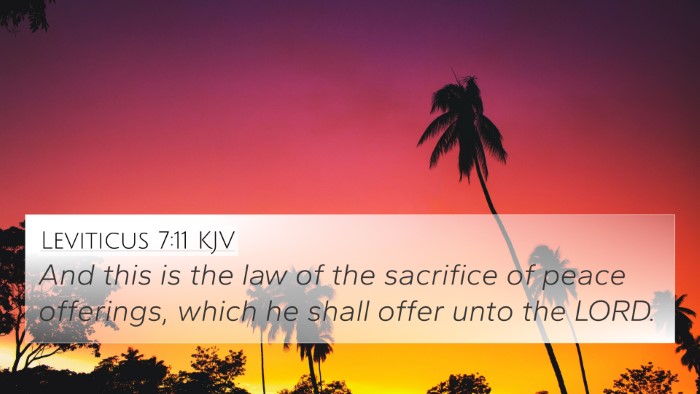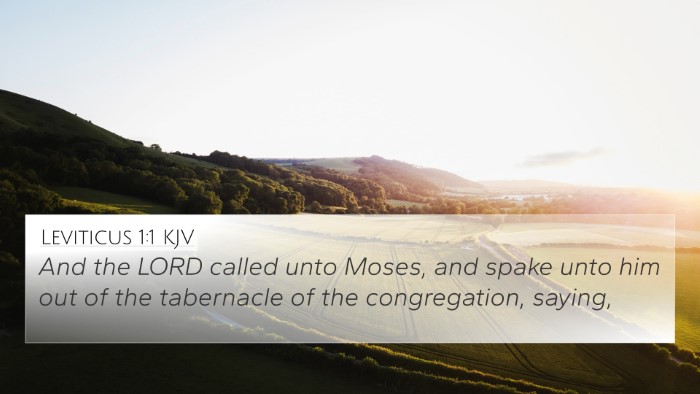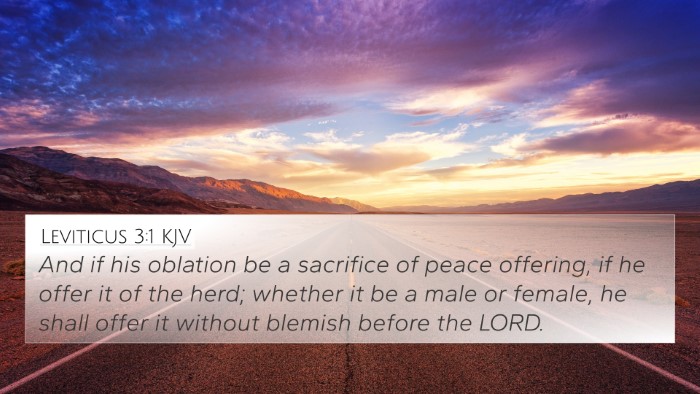Exodus 24:5 - Verse Meaning and Interpretation
Verse Context: "And he sent young men of the children of Israel, which offered burnt offerings, and sacrificed peace offerings of oxen unto the LORD." (Exodus 24:5, KJV) This verse occurs within the broader narrative of God establishing His covenant with Israel at Mount Sinai.
Summary of Meaning: In Exodus 24:5, we see Moses acting as a mediator between God and the Israelites. He sends young men to perform sacrificial offerings, which was a common practice to affirm commitments and seek divine favor. The sacrificial system represented the seriousness of the covenant relationship that Israel was entering into with God.
Insights from Public Domain Commentaries
-
Matthew Henry: Henry emphasizes the role of sacrifices in worship and covenant-making. He notes that these offerings symbolize the people's acknowledgement of their dependence on God and the need for atonement.
-
Albert Barnes: Barnes highlights that the young men represent the next generation of Israelites who are actively participating in their new covenant relationship with God. He suggests that this act of offering serves to set a precedent for the community’s practice of worship.
-
Adam Clarke: Clarke points out the significance of peace offerings as a communal action, signifying not just an individual’s relationship with God, but also the collective bond among the Israelites.
Connections to Other Bible Verses
Exodus 24:5 connects to several other key passages throughout the Bible. Here are some relevant cross-references:
- Leviticus 1:3-4 - Discusses the requirement of burnt offerings and principles of sacrifice.
- Hebrews 9:22 - Indicates the necessity of blood in the covenant and the sacrificial system.
- Romans 12:1 - Encourages believers to present their bodies as living sacrifices, tying back to the concept of offerings in the Old Testament.
- Matthew 26:28 - Jesus speaks of His blood of the new covenant, linking the sacrificial system to the New Testament revelation.
- 1 Peter 2:5 - Believers are described as living stones, a holy priesthood offering spiritual sacrifices to God.
- John 1:29 - John the Baptist refers to Jesus as the Lamb of God, connecting the sacrificial system to Christ’s ultimate sacrifice.
- Exodus 20:24 - Earlier guidelines on constructing altars for sacrifices, reinforcing the importance of worship practices.
Thematic Reflections
Worship and Covenant: This verse embodies the themes of worship, sacrifice, and covenant. These elements are foundational to understanding not only ancient Israelite faith but also Christian theology.
Inter-Biblical Dialogue: The practices and principles demonstrated in Exodus 24:5 set the stage for understanding the fulfillment of Old Testament themes in the New Testament, particularly through the lens of Jesus Christ’s atoning work.
Exploring the Nature of Sacrifice
Understanding the various forms of sacrifice is critical:
- Burnt Offerings: Symbolization of complete devotion to God.
- Peace Offerings: Representing fellowship with God and with each other.
- Sin Offerings: Highlighting the need for atonement for sin.
Cross-Referencing biblical texts
To aid in a deeper understanding of Scripture, utilizing tools for Bible cross-referencing is essential:
- Bible Concordance: A valuable resource for identifying themes and connecting verses.
- Bible Cross-Reference Guide: Useful for tracing thematic links between passages.
- Bible Chain References: A method for following related Scriptures throughout the Bible.
Conclusion
Exodus 24:5 serves as a rich text for understanding the significance of sacrifices in the context of worship and covenant in the Old Testament. By studying this verse alongside its cross-references, one can uncover the intricate tapestry of God’s redemptive plan, culminating in the person of Jesus Christ.
Utilizing cross-referencing methods enhances understanding and interpretation of scripture, revealing the depth of connection throughout the Bible.
